In 2002 over 150,000 visitors came to Yala National Park in Sri Lanka. As a result, this is the most visited park in the country and it is also the second largest in area. The 979 square kilometers is divided up into 5 sections, 2 of which are open to the public. Additionally, the park is located in SE Sri Lanka in both Uva and Southern Province.
The area was hit hard by the 2004 tsunami and as a result 250 people were killed. However, tourism is still on the rise, especially after the Sri Lankan civil war ended in 2009. Indeed, the wildlife benefited immensely under the protection of the park during times of civil unrest.
Yala National Park Tours
We spent 2 days in the park. Yala National Park tours are available and unfortunately you might get tackled by one of the free lance guides as you try to enter the park.
As usual, I had elected to do the self tour safari. However, park regulations require self tour visitors to acquire a guide at the park office. This worked out pretty well and you can expect them to be much more professional than the cowboys at the entrance gate.
Furthermore, we had traveled to Yala from Galle which is about a 3 hour drive. However, from Colombo to our accommodations near the park entrance, it is about 300 kilometers which is a much longer drive. The logistics of the drive can be a bit challenging because the roads in this part of Sri Lanka are not so well marked. Additionally, directions from locals can be misleading.
Introduction to Sri Lankan Elephants
In the last 60-70 years the Sri Lankan elephant population has diminished by over 50%. Although Sri Lanka still has one of the largest elephant densities in the world. With the cessation of hostilities in the Sri Lankan Civil War the pressure on elephant habitat has diminished. However, encroachment from farm lands surrounding the park still puts pressure on their survival.
Sri Lankan elephants are native to the island and are one of three species of Asian elephant. Characteristics attributed to their sub-species include the highest point of their body being on the top of their forehead and a long finger like feature at the tip of the trunk. Additionally, females are smaller than males and have small tusks, or no tusks at all. Furthermore, Sri Lankan elephants are more prone to have variation in skin pigmentation than other elephant species.
Day One – Yala National Park Safari
The Sri Lankan elephants were plentiful inside the park and they were easy to spot from the vehicle pathway. It is estimated that there are between 300-350 Sri Lankan elephants at Yala National Park.
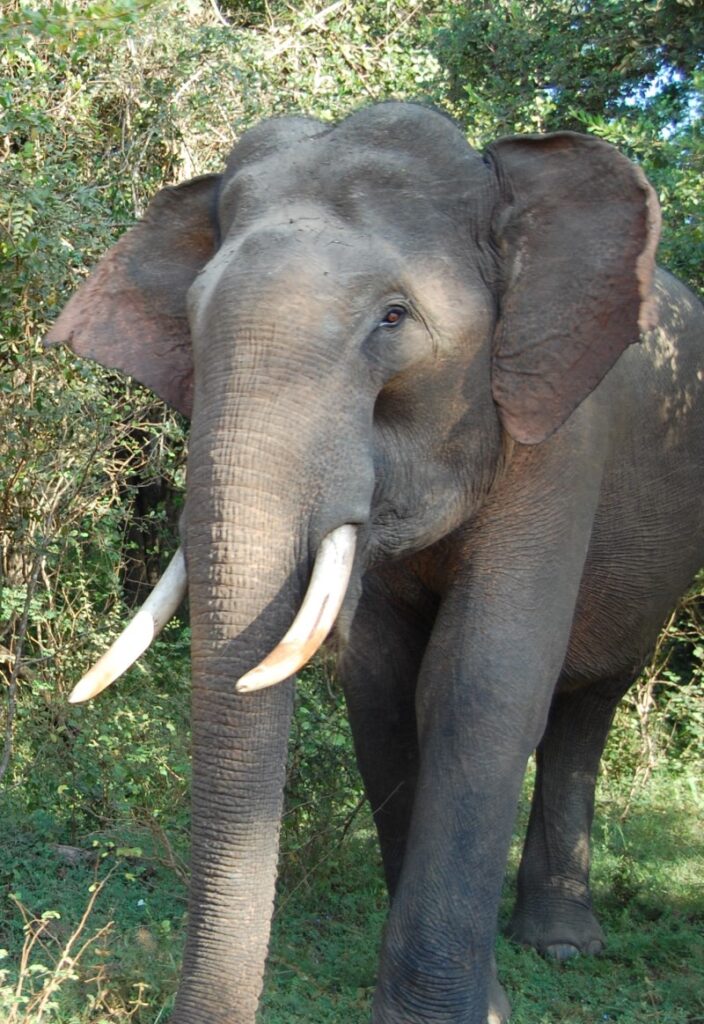
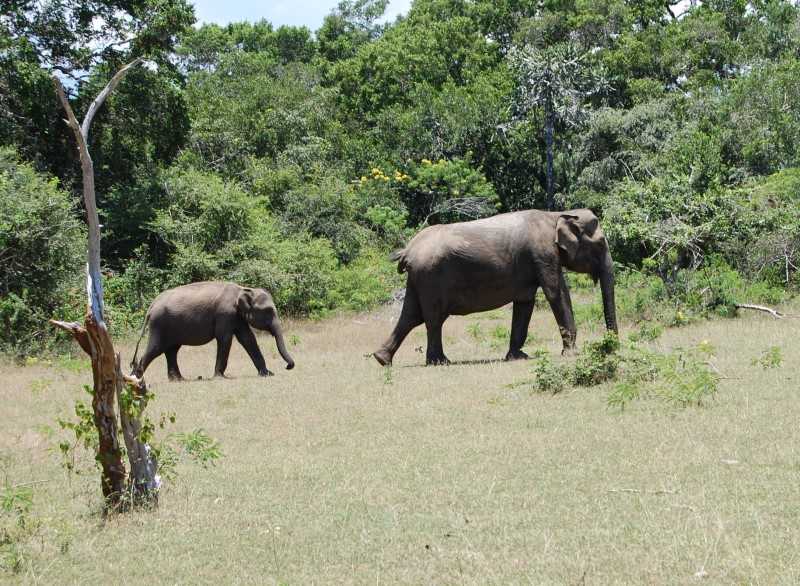
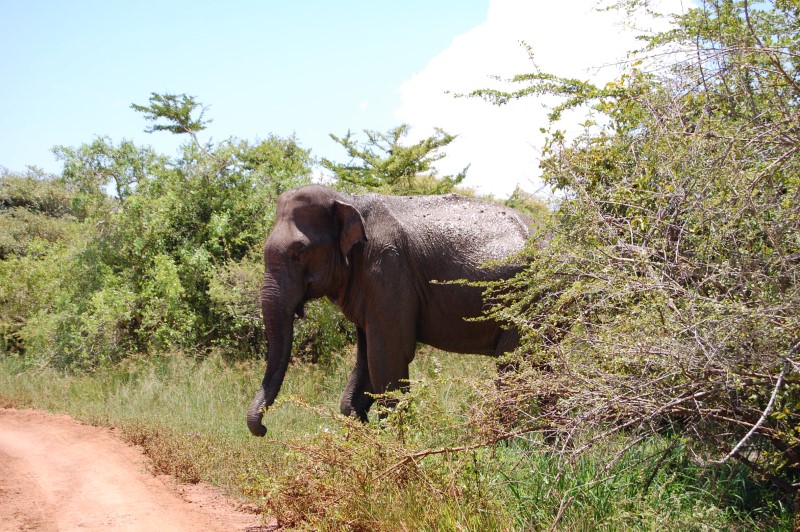
Most of day one was composed of elephant encounters and there was not much other wildlife that we saw. However, we did get a late start and arrived at the Yala National Park office late morning.
Day 2 – Yala Safari Highlights
Although we got a late start on day one, this would not be the case on day 2! As a result, we were already at the park gate by sunrise and ready to go. We would be rewarded with lots of wildlife variety including a reclusive Sri Lankan leopard sighting.


Sri Lankan Leopards
The Sri Lankan leopards are smaller than Indian leopards and they have a yellowish rusty coat with closely set spots. Additionally, the Sri Lankan leopard leads mostly a solitary life with the exception of a female with cubs.
When we had the encounter with the leopard in Yala National Park, the Sri Lankan leopard was high in a tree. However, in Sri Lanka the leopard is the apex predator and there is no competition. Therefore, they typically do not haul their prey into a tree which is typical of other leopard species.
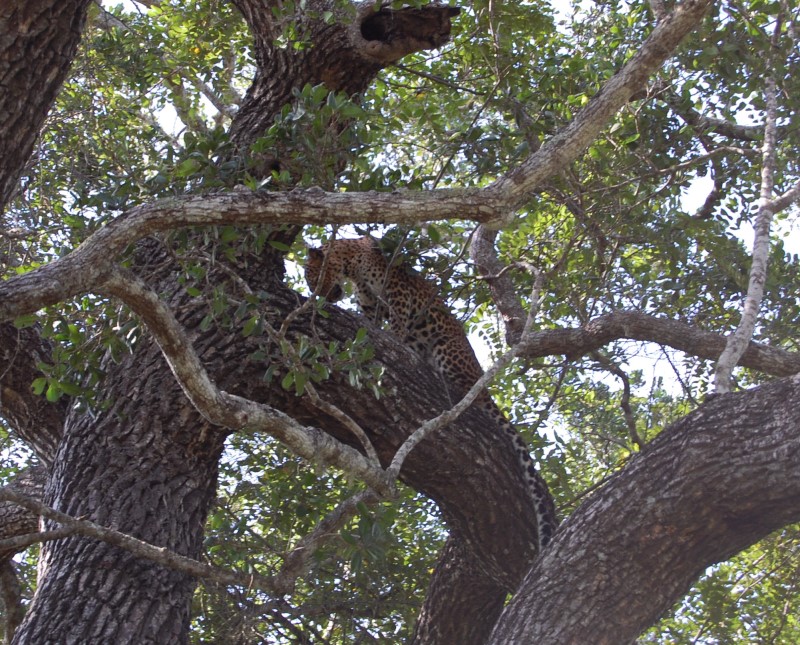
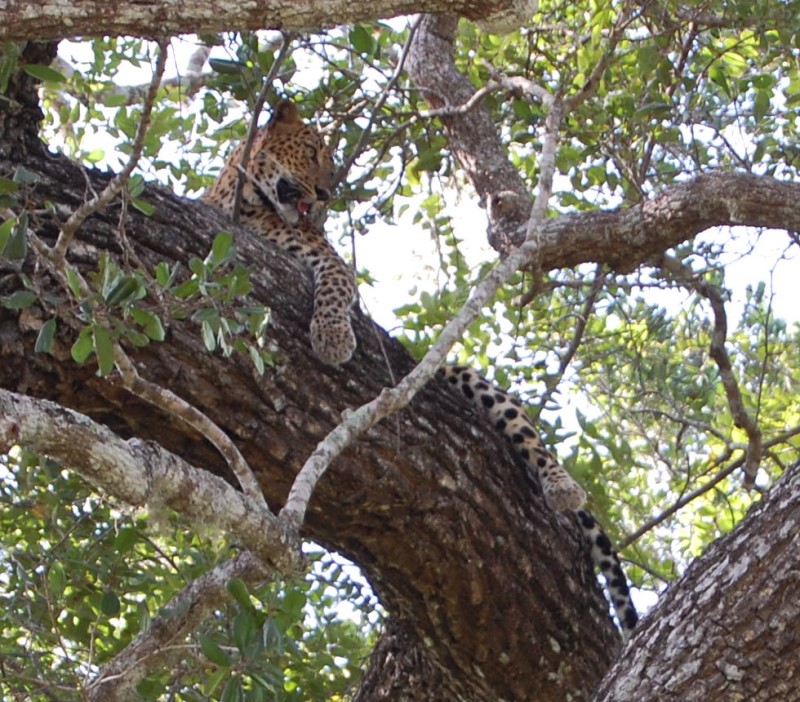
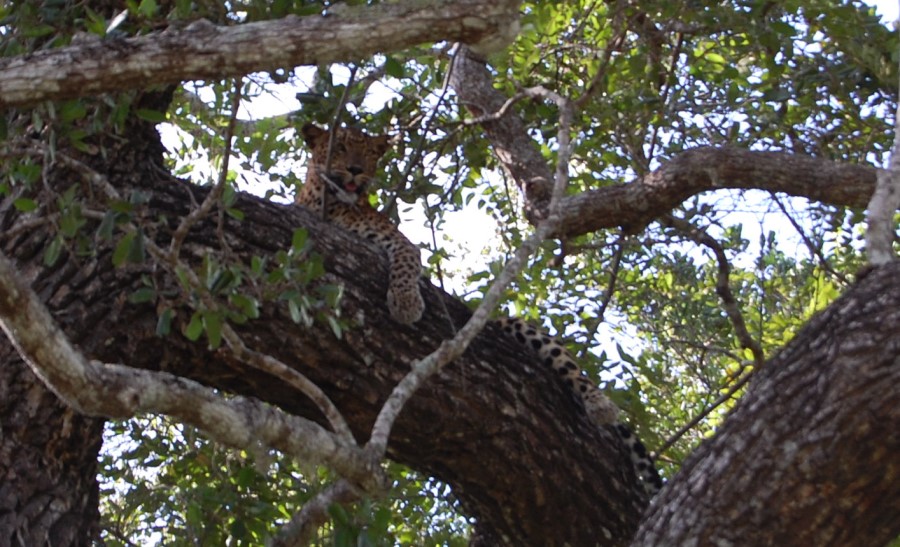
The sighting of the Sri Lankan leopard was amazing. I have been on many African safaris and the leopard is a very elusive animal. As a result of their nocturnal habits, they are usually very difficult to find.
Wild Peacocks at Yala National Park
Yala National Park is one of the most important bird areas in Sri Lanka. Although of the 215 bird species found in the park, only 7 of them are endemic to Sri Lanka.
The most photogenic wild bird species that we encountered in the park was the peacock. I have had many encounters with the peacock, however not with the wild variety. In this area of Sri Lanka they are very plentiful inside and also outside the park. They really are very beautiful birds and their calls can be heard throughout the evening and morning hours.
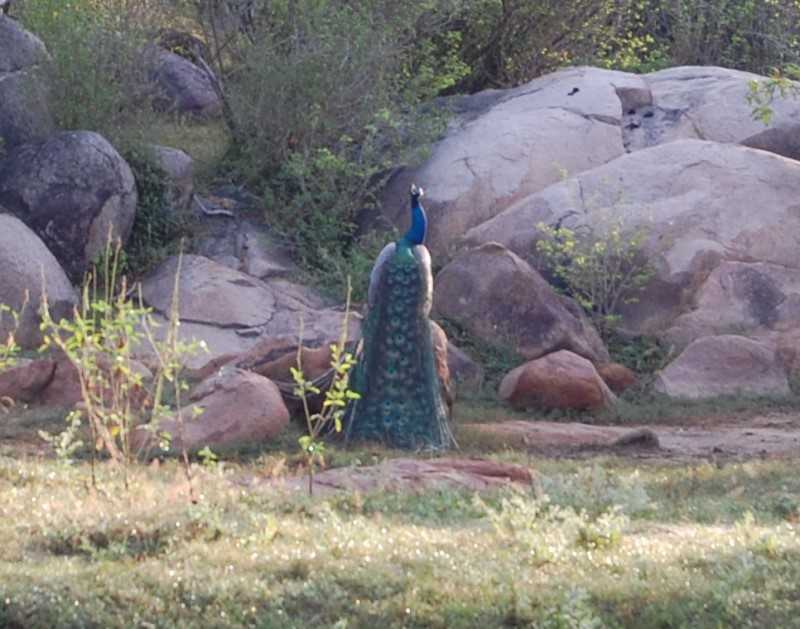
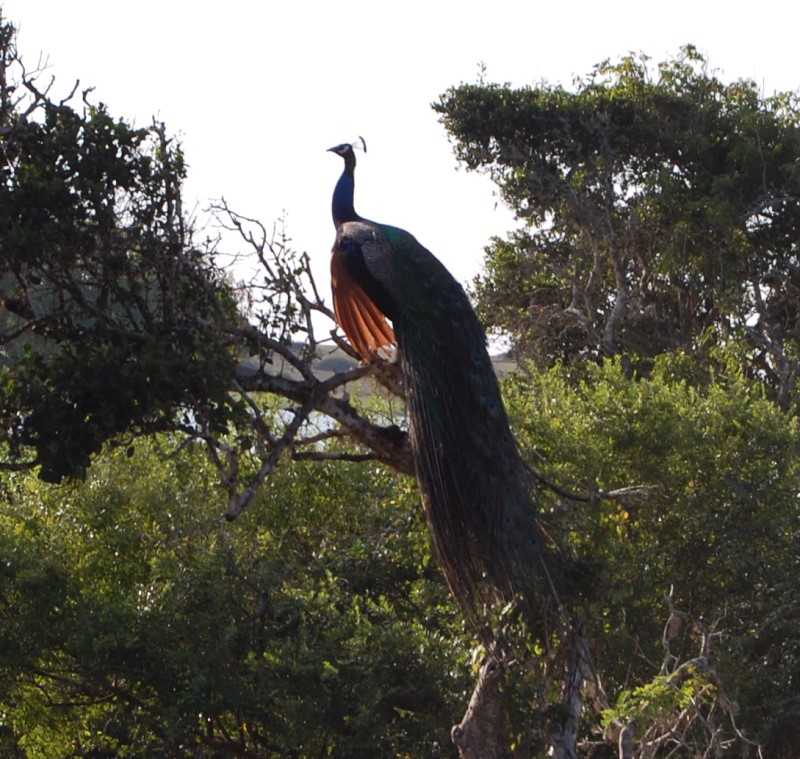
You can also encounter ugly creatures. In fact, this wild boar had just taken a morning mud bath and was all made up for the photo.
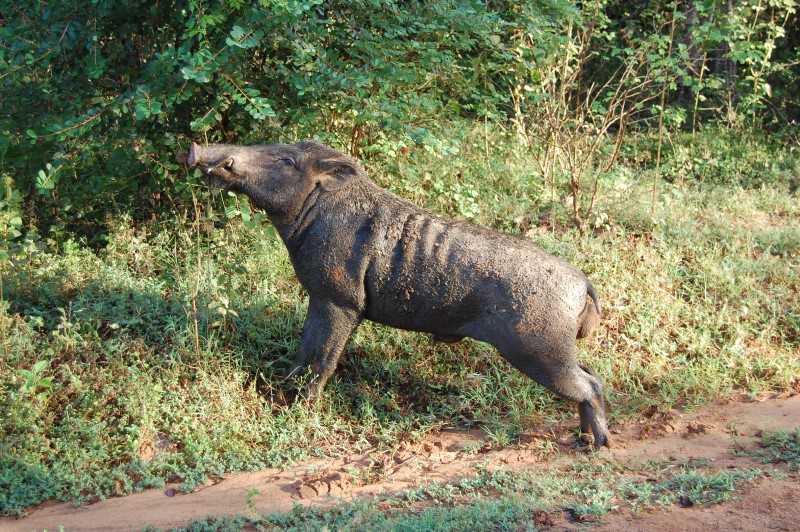
Coastal Strip
Last but not least, another beautiful area of the park is the coastal strip. The Yala National Park weather is typically very hot and very humid. If you are lucky you will catch an occasional sea breeze.

Additional Post You May Enjoy:
Visit the Sigiriya Rock Fortress
